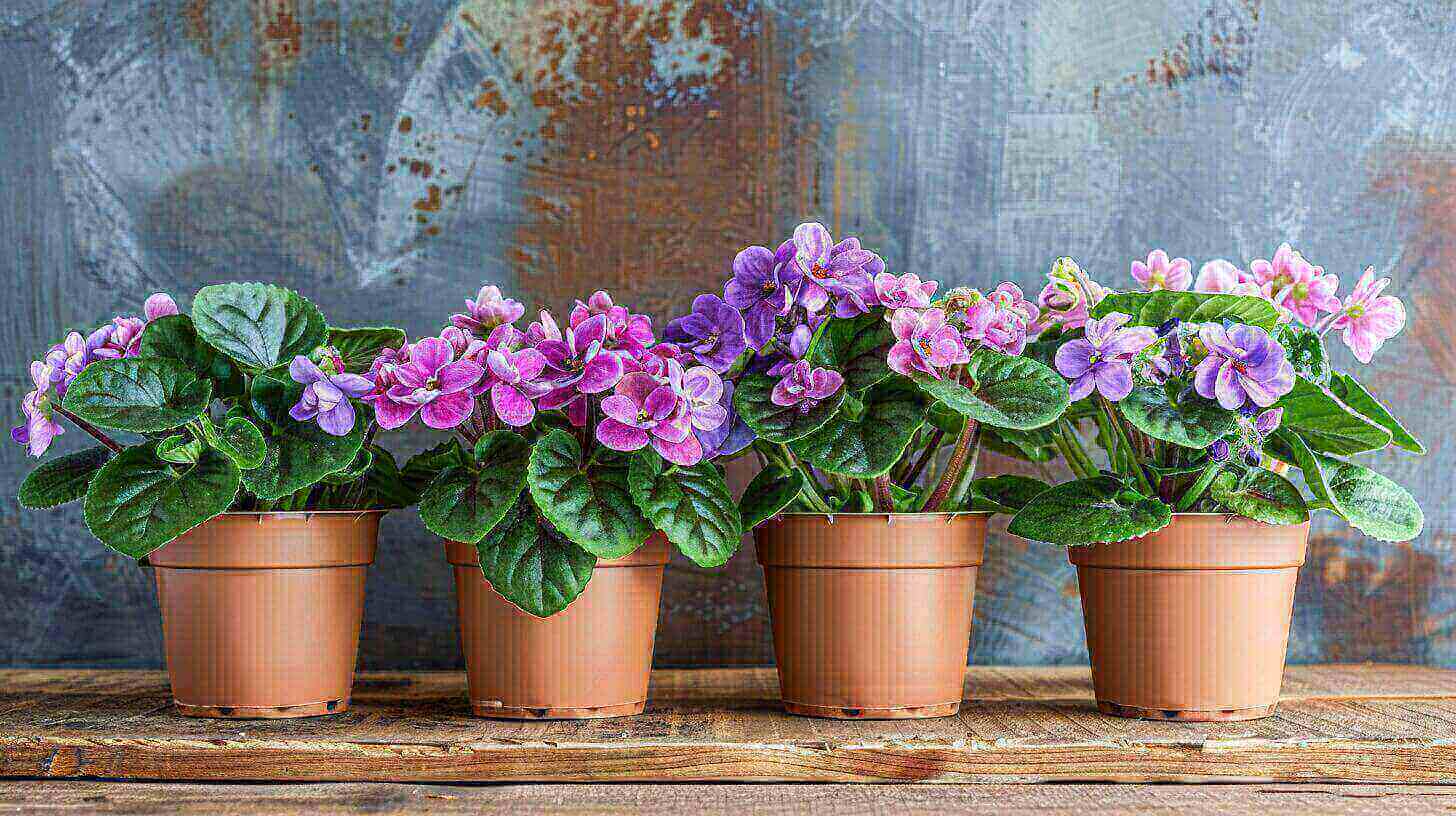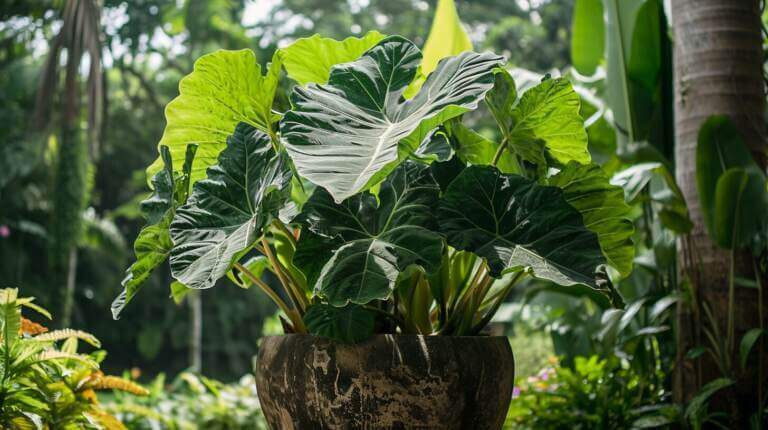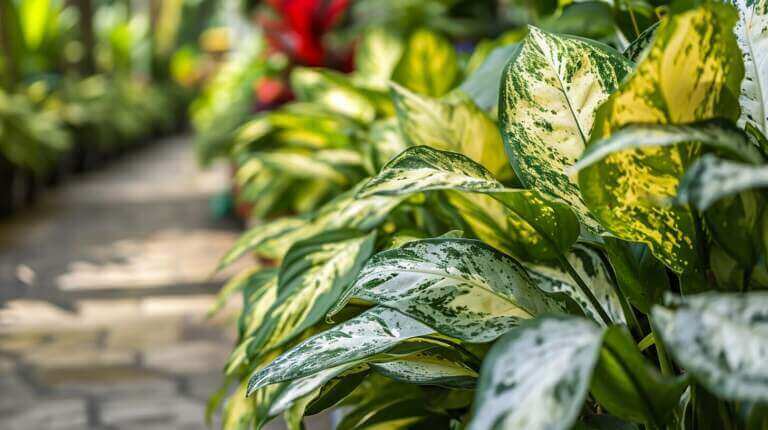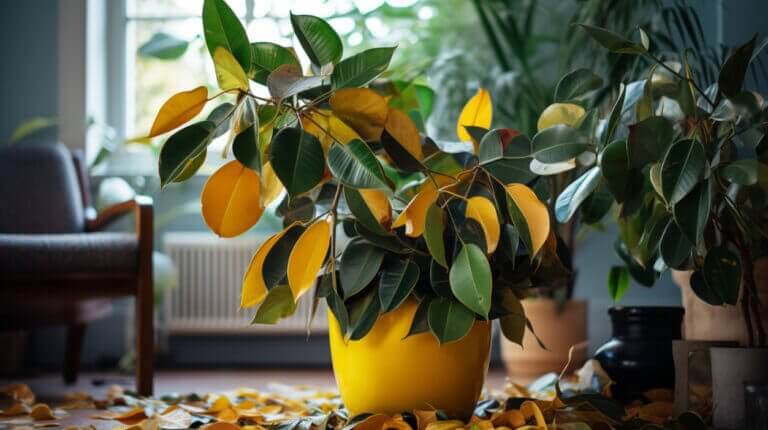A Beginner’s Guide to Growing African Violets Houseplant
African violets plant are stunning houseplants that can bring year-round beauty to any space. With their vibrant colors and low-light friendly nature, they are an excellent choice for beginner and experienced gardeners. In this beginner’s guide, I will share essential tips and techniques to help you grow and care for African violets successfully.
Key Takeaways:
- Learn the basics of growing and caring for African violets.
- Discover the different varieties and characteristics of African violets.
- Understand the importance of using the right potting mix and pot size.
- Find out about the ideal light requirements, watering, and feeding for African violets.
- Explore methods of propagating African violets and common problems to watch out for.
African Violet Varieties and Characteristics
African violets come in a wide range of varieties, each with its own unique characteristics. These plants showcase delicate flowers and strong leaf systems, adding beauty and elegance to any space. The blooms of African violets can be straight or curly, and they are available in a captivating array of colors, including shades of purple, pink, and white.
Popular African violet varieties include:
- Blue Boy
- Viking
- Admiral
- Persian Prince
While these varieties may differ in size, ranging from miniature to standard and large, they all share similar characteristics. African violets are relatively easy to care for, making them a popular choice for both beginners and experienced gardeners. As long as their basic needs are met, including proper potting mix, pot size, light requirements, watering, and feeding, African violets will thrive and continue to produce stunning blooms.
To fully appreciate the beauty and diversity of African violet varieties, refer to the table below for a comprehensive overview:
| Variety | Bloom Type | Color | Size |
|---|---|---|---|
| Blue Boy | Straight | Blue/purple | Standard |
| Viking | Straight | Purple/pink | Miniature |
| Admiral | Curly | Purple/pink | Standard |
| Persian Prince | Curly | White/pink | Large |
As you can see, African violets offer a dazzling selection of varieties, each with its own distinct charm. With the right care and attention, these plants will reward you with their breathtaking blooms and vibrant colors.
Potting Mix and Pot Size for African Violets Grow
When it comes to growing healthy African violets, choosing the right potting mix and pot size is crucial. These beautiful plants thrive in well-drained, loose soil, and traditional potting soil won’t provide the necessary conditions. Instead, opt for a specialty mix specifically designed for African violets. This mix allows for proper air circulation around the roots and helps prevent overwatering, which can lead to root rot.
When selecting a pot for your African violets, it’s best to choose one that is slightly smaller than the plant’s root system. This encourages blooming and prevents excessive soil moisture, which can also lead to root rot. African violet pots, with their unique design, are an excellent choice as they provide the ideal environment for these plants. These pots feature a top part for the plant to grow and a bottom reservoir that stores water. This reservoir allows the plant to take up water as needed, ensuring consistent moisture levels.
| Pot Size | Plant Size | Benefits |
|---|---|---|
| Small | Miniature African violets | Encourages blooming |
| Medium | Standard African violets | Allows for moderate growth |
| Large | Large African violets | Provides ample space for growth |
Remember that African violets thrive when slightly root-bound, so avoid using pots that are too large. Repotting annually is recommended to refresh the soil and accommodate the plant’s growth. By choosing the right potting mix and pot size, you’ll provide the optimal growing conditions for your African violets, leading to vibrant blooms and healthy plants.
Light Requirements, Watering, and Feeding for African Violets Bloom
African violets have specific light requirements to thrive and produce beautiful blooms. They prefer bright, indirect light, making them perfect for placement near a window with moderate to bright indirect sunlight. However, it’s important to avoid direct sunlight, as it can cause leaf spots or wilting. Positioning African violets in the right light conditions will ensure optimal growth and vitality.
When it comes to watering African violets, a bottom-watering approach is recommended. These delicate plants are sensitive to water on their leaves, so it’s best to water the soil directly and avoid getting water on the leaves. This can be achieved by using self-watering pots or by pouring room-temperature water onto the soil. It’s crucial to keep the soil damp, similar to a wrung-out sponge, to provide adequate moisture for the plants.
Fertilizing African violets is an essential part of their care routine. Using a gentle, urea-free liquid fertilizer every time you water will provide them with the necessary nutrients for healthy growth and vibrant blooms. Feeding the plants regularly will ensure they receive a balanced diet and thrive in their environment. Remember to follow the instructions on the fertilizer packaging for proper dosage and application.
Potting Mix and Pot Size for African Violets
When it comes to potting African violets, it’s crucial to use a well-drained specialty mix instead of traditional potting soil. The specialty mix provides the loose and well-aerated environment that African violets prefer. These plants should be planted in pots that are slightly too small, as this encourages blooming. Repotting annually with fresh soil is recommended to accommodate growth and maintain healthy root systems.
| Light Requirements | Watering | Feeding |
|---|---|---|
| African violets prefer bright, indirect light. | Water the soil directly, avoiding water on the leaves. | Use a gentle, urea-free liquid fertilizer with each watering. |
| Avoid placing them in direct sunlight. | Keep the soil damp, similar to a wrung-out sponge. | Follow the instructions on the fertilizer packaging. |
By providing the right light conditions, adopting a bottom-watering approach, and incorporating regular feeding into their care routine, African violets will thrive and reward you with their beautiful blooms. Remember to monitor the plants closely, adjusting their care as needed, and you’ll be able to enjoy the vibrant colors of African violets in your home or workspace.
Propagating African Violets and Common Problems
Propagating African violets is a rewarding way to expand your collection. This can be done through leaf cuttings or by dividing the crowns. To propagate through leaf cuttings, carefully select a healthy leaf and remove it from the parent plant. Place the leaf in a container filled with a seed starting potting mix, ensuring that the stem is buried and the leaf is resting on the surface. Keep the soil moist and within a few weeks, small plantlets will begin to emerge from the base of the leaf. Once these plantlets have developed roots and are large enough, you can transplant them into their own pots.
Dividing the crowns of established African violets is another method of propagation. Gently remove the plant from its pot and carefully separate the crowns, making sure that each division has roots attached. Plant each division in its own pot, using a well-draining potting mix. Keep the soil moist and provide the same care as you would for a mature African violet. With proper care, the divisions will establish themselves and grow into healthy plants.
While African violets are generally resilient, they can be susceptible to common problems. Rotting roots, often caused by overwatering or poorly draining soil, is a common issue. To avoid root rot, make sure to use a well-draining potting mix and water the plants only when the top inch of soil is dry. Additionally, pests like thrips or fungus gnats can infest African violets. Regularly inspect your plants for any signs of pests and take appropriate measures to control them. Diseases, such as cyclamen mites, can also affect African violets. If you notice any unusual discoloration or damage to the leaves, seek guidance on proper treatment and prevention.
By understanding the process of propagating African violets and being aware of common problems, you can confidently expand your collection and ensure the health of your plants. With a little patience and care, you’ll be rewarded with beautiful blooms and a thriving African violet garden.
FAQ
How often should I repot my African violets?
It is recommended to repot African violets annually to introduce fresh soil and accommodate their growth.
Can I use traditional potting soil for African violets?
No, African violets require a specialty potting mix that is loose and well-aerated.
How should I water African violets?
It is best to adopt a bottom-watering approach by watering the soil directly and avoiding getting water on the leaves.
What kind of light do African violets need?
African violets prefer bright, indirect light, so placing them near a window with moderate to bright indirect sunlight is ideal.
How often should I fertilize African violets?
It is recommended to use a gentle, urea-free liquid fertilizer every time you water your African violets.
How can I propagate African violets?
African violets can be propagated through leaf cuttings or by dividing the crowns of established plants.
What are some common problems with African violets?
Common problems include root rot, pests like thrips or fungus gnats, and diseases like cyclamen mites.







